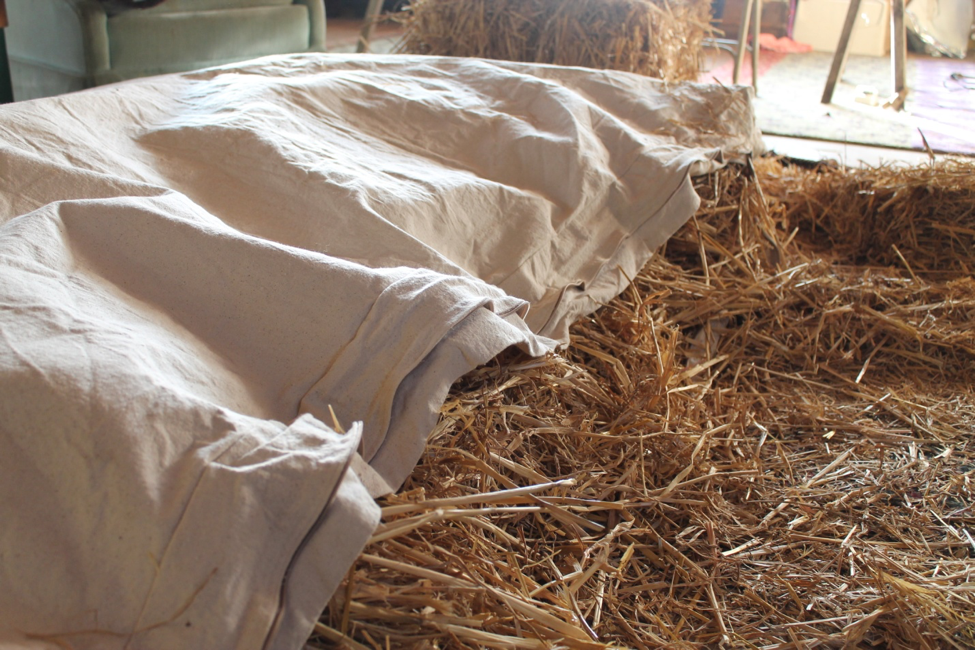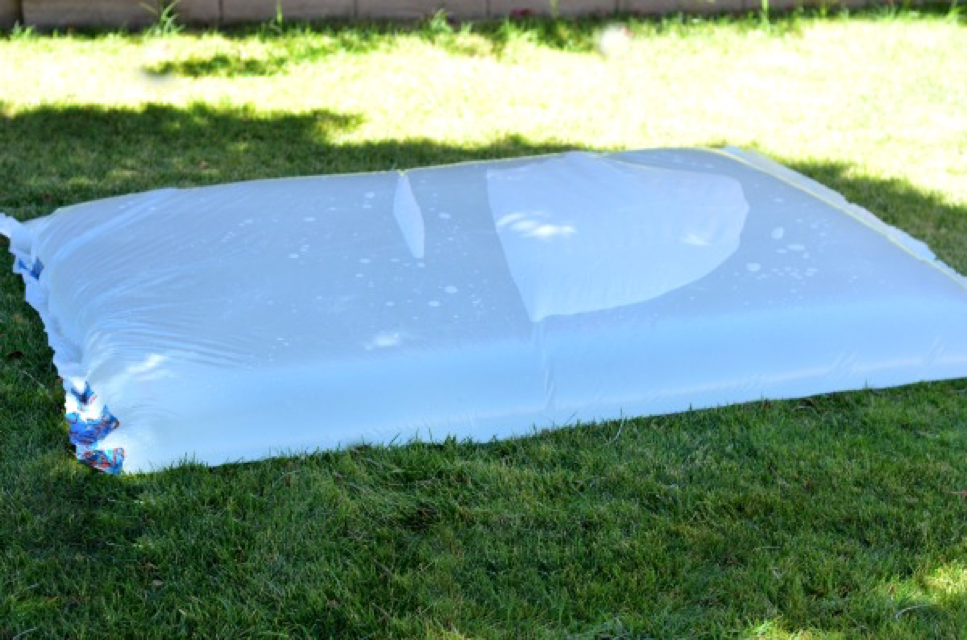Long before orthopedic beds and latex mattresses were invented, people slept on the ground, on animal fur, on leaves or straws. History teaches us that the ancient Romans used straw for their mattresses, and in Asia, inhabitants opted for rice chaff (the non-edible husks). Oat chaff was the primary material for beds in Scotland. Leaves, reeds or seaweed were also considered good mattress-fillers in other parts of the world.
Nowadays, people who live off-grid often choose to handmade their beds and mattresses, using whatever they have at their disposal: straw, feathers, wool. Creating a bedstead with natural elements may seem challenging, but it only takes creativity, some manual labor, basic tools and a few tips, which I have already prepared for you.
Straw is better than hay
It may be easier to find hay when being outdoors, but straws are better suited for a mattress. Many people are allergic to hay, and sometimes they don’t even know it. Therefore straw is the safer choice. Besides, there’s often plenty of it available after cereal crops have been harvested.

Carry a tick
Whether you’re just going camping or you’re in a critical situation, make sure you have a tick in your backpack or survival kit. It is a mattress cover, and you can make it from any material you like – usually, they were made from canvas woven from hemp, but presently any resistant material can be an option. When you’re out there, you’ll just unpack the tick and fill it with local stuffing – straw, fallen leaves, even grass.
Stuff tightly
The secret is to stuff evenly and tightly, so you won’t have lumps in your mattress. You can use a stick to push the straws into corners or even get inside the tick and arrange them properly, as trymattres.com suggests.
Get dry ingredients
Whether you’re using straw, leaves, grass or even hay, make sure they are dry. If it’s raining and everything is wet, try finding dry moss (on trees or rocks) and fill the tick with it.
Go freestyle
What if you don’t have a tick? You’ll be just fine sleeping on the ground! Get together as many leaves as you can, moss, hay, straws, anything you can find. Make a pile and give it the shape of a mattress, to fit your whole body. Your bed is made.

Check for bugs
Even if you are extremely brave, you don’t want to wake up because something is moving through your handmade mattress! So before stuffing the natural elements into the tick (if this is how you’ll create your bed), I advise you to check for crawling beings.
Be a caveman
If you’re a hunter and your prey is a big animal, remember that its skin or fur can be a warm and comfortable bed for you. But this is something that requires a particular set of skills. Skinning an animal is not an easy job, and not anyone can do it.
Make a water mattress
If you’re near a water source, take advantage of it. You’ll need a few essential items for this: thick plastic foil, transfer or baking paper, a flat iron, adhesive tape and a hose. That’s why this distinct type of mattress is not something you could make in the wild, but it’s an excellent choice for outdoor camping. Tutorials can be found on the web, and the outcome will be a hit.

Braided twigs
Get all the twigs you can find and braid a mat. It may take a while, but you don’t need other tools than your hands. You can sleep directly on the mesh, or you can put leaves, straw or hay on it.
Do some digging
Dig a four-square or round hole in the ground, big enough to fit you and several inches deep. Put the leaves, grass, straw or hay in it and prepare for a warm sleep. Mother Earth is there to provide for you.
